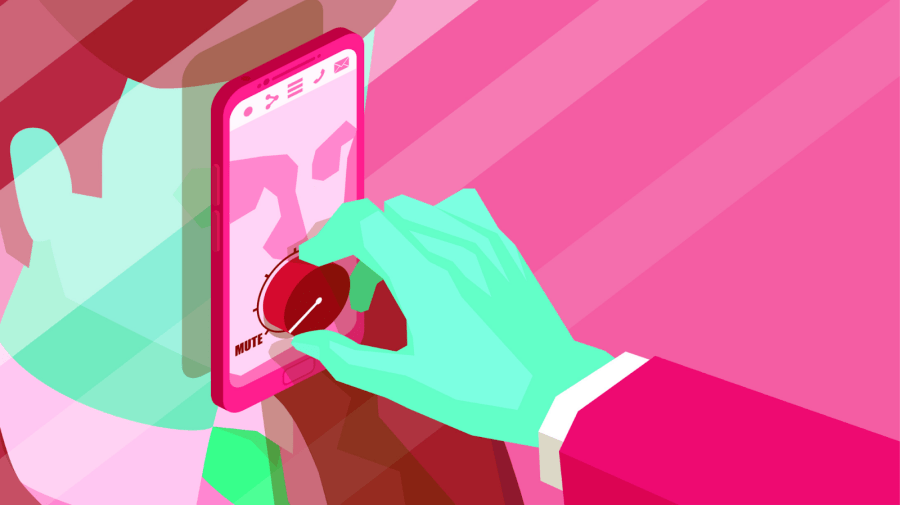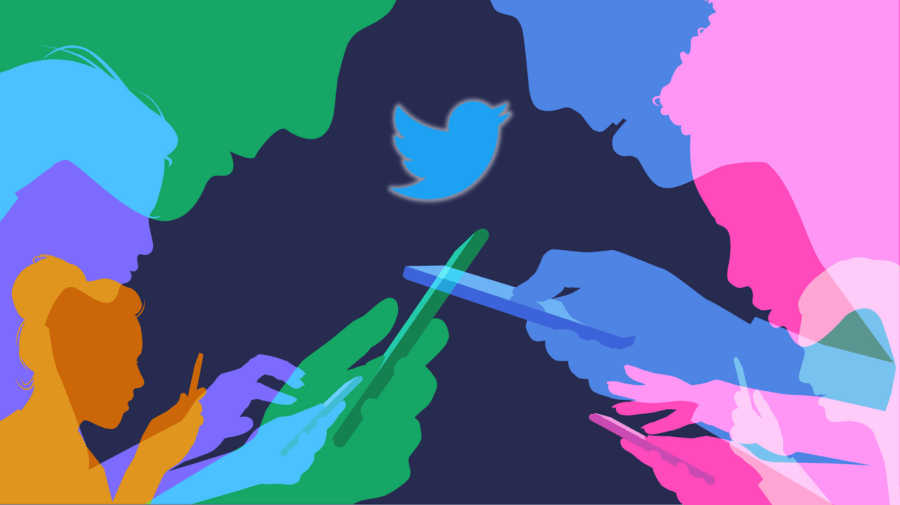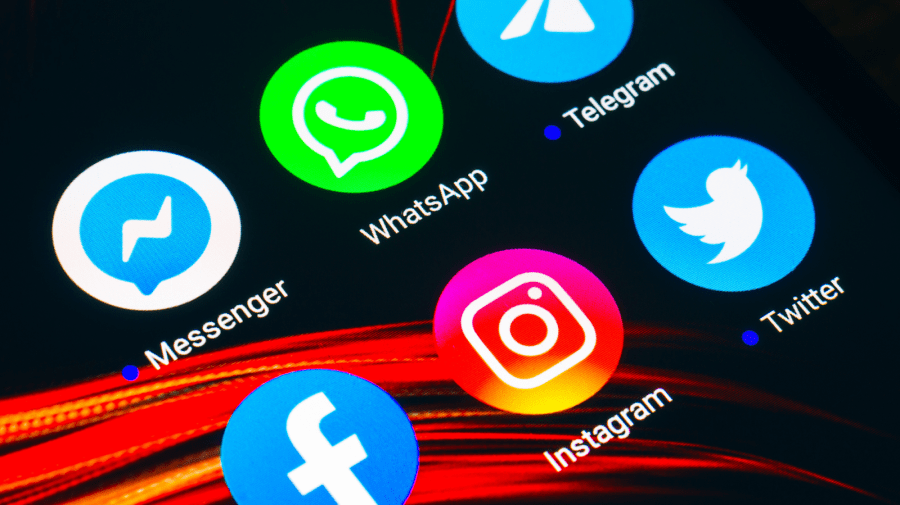
Although “free speech” has been heavily peppered throughout our conversations here in America since the term’s (and country’s) very inception, the concept has become convoluted in recent years. Somewhere between the infamous Trump Twitter ban and Elon Musk’s purchase — or seemingly friendly hostile takeover — of Twitter, it’s become apparent that some people have begun viewing the term as being interchangeable with the concept of “hate speech”. Although there’s some overlap between the two terms, “free speech” and “hate speech” are distinct terms that should be kept separate moving forward.
While some view the suppression of hate speech as a measurement of what could happen to free speech in the future, this assumption is inaccurate, revealing a misinformed line of thinking. The real threat is that the rampant level of internet hate speech threatens free speech — often because the terms are misused, but more so because there isn’t a clearly defined way to hold people accountable for spreading hate speech and encouraging harm.
“The most effective way to counter the potential negative effects of hate speech is not through censorship, but rather through more speech,” says former American Civil Liberties Union (ACLU) president Nadine Strossen, noting that suppression and censorship often lead to more harm. So, what can be done? Here, we’ll explore free speech vs. hate speech; how they overlap; and why they need to be used correctly, and reacted to accordingly, going forward.
Free Speech vs. Hate Speech: What’s the Difference?
What Is Free Speech?
Free speech is commonly defined as the right of an individual to express their opinions without censorship, government interference, retaliation, legal sanctions, or other negative ramifications. As one of the main tenants in the United States Constitution, the right to free speech is literally embedded in our nation’s founding principles.
Over the years, the notion of free speech has been repeatedly called into question, becoming a hot-button topic for high school debate teams to high-ranking politicians alike. However, the right to free speech has perhaps never been as threatened as when folks stretch it to include “hate speech”.
What Is Hate Speech?
Hate speech is a term used to describe all forms of expression that are considered bigoted, rude, or otherwise hateful. Although there’s not one single concrete definition, hate speech generally refers to forms of expression that involve the humiliation, vilification, or the intent to spark hate against a person or group of people based on their race, religion, skin color, disability, gender identity, national origin, ethnicity, sexual orientation and so on.
While many are advocating for stricter laws that punish hate speech, defining the term (in legalese) has proved difficult. As the ACLU points out, “The First Amendment to the Constitution protects speech no matter how offensive its content.” But in a time where hateful messages go viral almost daily, what can be done?
So, Why Is There an Overlap in How People Use These Terms?
On the one hand, hate speech is very much a part of free speech. That is to say, if we believe that everyone should truly be allowed to say whatever they feel, there will be those who have especially hateful opinions. “Where racist, misogynist, homophobic, and transphobic speech is concerned, the ACLU believes that more speech — not less — is the answer most consistent with our constitutional values,” the organization notes on its website.
On the other hand, although the notion of free speech asserts that we’re all able to voice our opinions how we see fit, freedom of speech does not assert the freedom from consequences. In other words, yes, we’re all free to weave our words together in whatever combinations we wish, but if those words are problematic or offensive, there will likely (and should) be consequences.

When you publicly post hateful remarks on public platforms, like social media, you’ll likely be held liable for the intent behind your words, as they can be used to influence others. For those who have massive platforms and enjoy posting on public forums, being held accountable can lead to a kind of defensiveness.
“You very frequently get public officials and even lawyers saying ‘hate speech is not free speech.’ But that is not correct! The Supreme Court has never created a category of speech that is defined by its hateful conduct, labeled it hate speech, and said that that is categorically excluded by the first amendment,” former ACLU president Nadine Strossen told NPR in 2018. “Speech cannot be punished just because of its hateful content. But when you get beyond content and look at context, speech with a hateful message may be punished.”
How Musk, Trump & Others Have Confused the Terms Further
Although we have gone through many free speech debates over the years, the most recent discussion was sparked by the former president and Twitter’s decision to ban him for spreading misinformation. As one of the most polarizing political figures of our time, Donald Trump’s reign exposed significant cracks in the foundation of our country as well as the present-day media and social media landscapes.
While his supporters believe Trump’s rhetoric is a brash yet necessary part of attempting to “make America great again,” his many opponents believed that his inflammatory remarks only served to spread misinformation and embolden racist bigots — and, in the most extreme cases, encouraged them to commit violent acts. Trump’s emboldening of racists and hate groups called into question how far we, as a nation, should allow this “free speech” banner to spread.
More importantly, it pushed us to ponder on one’s influence and intent, and about just how much people should be allowed to say online before their mic is cut. Ultimately, Twitter decided to ban Trump, sending one of the most powerful messages regarding the nature and protection of free speech that we’ve seen in generations. Banning a man as powerful as Trump sent the message that no one is above reproach when it comes to being held accountable for their hateful words — and the additional verbal and physical harm those words may inspire.

Twitter’s decisive action also sparked a new debate. These days, many people are wondering how we decide when someone has gone too far, and what the consequences of going too far and espousing hate speech should be. Public figures, like Tesla and SpaceX CEO Elon Musk, have officially weighed in on the debate. “Free speech is the bedrock of a functioning democracy,” Musk said in late April 2022, in a statement that announced his forthcoming deal to purchase Twitter, “and Twitter is the digital town square where matters vital to the future of humanity are debated.”
While the first part of Musk’s quote rings true, his track record doesn’t back up his words; as CNBC points out, “Musk’s free speech advocacy seems to apply mostly to his own speech or that of his fans and promoters.” Moreover, journalists have spoken out about Musk’s efforts to curate what they write — a huge free speech, and freedom of the press, violation. It’s clear that Musk, like many lending their voices to the debate, doesn’t have a firm grasp on what free speech is, nor how it differs from hate speech.
The Future of Free Speech
While many people disagree with Trump’s opinions, they’re concerned that banning Trump from social media platforms may create a slippery slope in which any and everyone can be banned simply for saying things that are considered offensive to an individual or group of people. But this notion is hardly new. Back in 2018, Wired ran a story asserting that around 80 Occupy Wall Street activists were suspended from Twitter without explanation.
Of course, that isn’t the first account “purge” that’s been reported or the first instance of a seemingly targeted ban. In 2017, Twitter suspended the account of popular queer writer and academic Anthony Oliveira. The Verge notes that this “[prompted] a backlash from followers who contrast the decision with what they see as Twitter’s continued failure to combat the rise of the violent alt-right and the prevalence of anti-LGTBQ hate speech on its platform.”
Whether valid or not, there are tons of tweets from users who assert they have been “banned for no reason”, further calling into question the nature of banning accounts and who it impacts most (warranted or not).
So, while free speech is important to prevent all-out tyranny, using the term as a means of protecting hate speech from consequences jeopardizes free speech’s validity. In order to preserve free speech in the future, we need a clearly defined way to penalize those who engage in hate speech — a solution that doesn’t threaten others who are simply exercising their rights to free speech. And all of this starts with understanding the difference between the terms, so that we — and public figures like Elon Musk — will stop convoluting, and inadvertently defending, both concepts.






